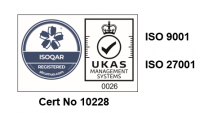5 easy steps to assessing Regulated Activity in Scotland, the PVG Scheme
July 8th, 2016 by Jonathan Bazely

Simple steps to establish if PVG Scheme is required for working with children and vulnerable adults in Scotland.
What is Regulated Activity (or Regulated Work) in Scotland?
Regulated Activity (or Regulated Work) is a term used by Disclosure Scotland to help employers or endorsing organisation to determine the level of Disclosure Scotland criminal record check to request, or the type of Protection of Vulnerable Groups (PVG) membership an applicant should hold.
Legislation in Scotland is based around the Protection of Vulnerable Groups (Scotland) Act 2007 plus the statutory instruments and applicable amendments. This act provides guidance on assessing whether an individual is doing Regulated Work. This can broken down into five steps or questions that an organisation should use to make their decision. We would strongly recommend that all organisations keep a record of this decision making process/risk assessment as good practice. To read the Disclosure Scotland guidance in full, please click on this link.
Is it work?
A detailed definition of what constitutes ‘work’ is included in the guidance provided by Disclosure Scotland. Generally the definition of ‘work’ is very broad and means work of any kind, including volunteer roles which can be classed as unpaid work. Certain types of role are excluded from the definition of ‘work’, such as family relationships or close personal arrangements where no payment is involved. Clear examples are provided within the guidance to assist further, as the concept of a close personal arrangements may need clarification for any assessment process.
Who are they working with?
Details are included to help define the applicable groups that the individual will be working with. For children this is easily defined as an individual under 18 years old. An adult is classed as ‘protected’ if they are over the age of 16 and are in receipt of certain defined types of service. The aim is to specify the type of service received by the individual, rather than any particular disability or impairment which make the adult vulnerable. The types of service that an individual may be in receipt of that make them ‘vulnerable’ include:
- Registered care services
- Health services
- Community care services
- Welfare services
What do they do?
Some activities are always classed as Regulated Activity if they meet set requirements, as defined in the guidance. This can generally be split between working with children and working with vulnerable adults:
- Working with children includes certain types of work (e.g. teaching or caring), certain establishments (e.g. schools or further education institution) or set positions of trust (e.g. children’s charity trustee or chief social work officer for a council). It is also important to note that day to day supervision of someone undertaking regulated work is also classed as regulated work.
- Working with adults requirements are copied in the same categories as the children with the types of work (e.g. providing assistance or caring), establishments (e.g. care home or residential establishment) or certain positions (e.g. member of certain committees).
Is it their normal duties?
The concept of ‘normal duties’ is important as it aims to limit the scope of Regulated Work. The work should not be a one-off or infrequent task that the employee can not foresee. As a guide the employer should review the applicable role and see if it would be included in a job description, rota option or planned task. If the employee can reasonably expect to have access to children/vulnerable adults then it could be classed as a ‘normal duty’. This links with the exceptions that apply to ‘incidental contact’ with both groups.
Are there any exceptions that apply?
There are some exceptions that apply to work with both groups, that would exclude the activity from the definition of Regulated Work. Keys terms to review include ‘incidental activity’ whereby the employee comes into contact with a Vulnerable Group through their work with non vulnerable groups. A good example of this would be an activity that is open to the public and a child chooses to attend. The individual may be carrying out work with a child however they have no opportunity to foresee this contact as it is open to a wide cross section of society and attendance is discretionary. Employers should ensure they consider the target audience for ‘open’ events and the purpose or aim of the event.
What check should I request if the role is not Regulated Work?
There are some roles that do not fall under the scope of the Protection of Vulnerable Groups Acts but are eligible for an Enhanced level Disclosure Scotland check. This could include individuals over the age of 16 who are living with host families, that are undertaking Regulated Activity.
For any role the employer can request a Basic level criminal record check.
Additional Questions:
What is a basic level criminal record check?
What is the difference between a DBS Disclosure and a PVG Check?





